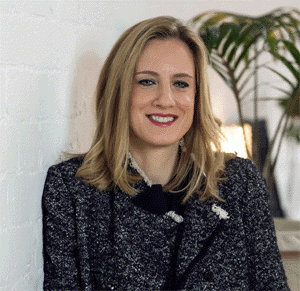
UDC Finance has posted a 20% rise in annual profit to a record high of $51.5 million as lending and revenue grew strongly.
The ANZ owned plant, equipment and vehicle lender said new lending rose 18% in the year to September 30 to $1.34 billion, with revenue also up 18%. UDC's cost to income ratio fell to 27.3% from 31.6% the previous year with costs up 1%.
Lending growth was especially strong in the forestry sector at 63%, new car finance at 51%, construction at 15%, and agriculture at 13%, UDC said.
UDC's September year profit rose $8.6 million to $51.5 million from $42.9 million in its previous financial year. It's the finance company's record high annual profit topping the $43.9 million recorded in 2004.
Net interest income rose 16% year-on-year to $110.3 million, which UDC CEO Tessa Price attributed to record new lending and maintaining margins.
Money invested in UDC deposits and debentures increased by 5% annually to $1.57 billion. UDC also sources funding through an $800 million ANZ loan facility. As of September 30, $395 million of this was drawn down compared to $320 million a year earlier. UDC attributes the increase to the gap between its 10% growth in net lending and 5% growth in deposits.
'Good growth in buoyant economy'
Price told interest.co.nz UDC's strong lending growth has continued into its new financial year.
"In October and November we've had two very strong months (with) over $100 million in new lending," Price said.
She said the economy remained in a "sweet spot" with this set to continue into 2015.
"I'm seeing at least the next 12 months of growth, and it's good growth," Price said.
Customers continue to see a lot of activity in the economy with interest rate rises earlier this year having negligible impact. With unemployment at a five and a half year low, interest rates now static, business confidence rising with optimism good and hiring plans at many firms, plus residential and commercial construction up, all over things are "buoyant," Price said.
An 8 month wait for a new truck
However, there were issues around the supply of equipment, notably trucks, failing to keep up with demand.
"Talking to a customer they were saying if they want a new truck now they have got to order at least eight months out. It has come back slightly (but) that's a long lead time for customers who have got work now and are trying to predict into the future as well," said Price.
Truck sales were up 30% year-on-year, and are predicted to "plateau" to about 20%, she added.
Meanwhile, Price said UDC had been very focused on growing new car finance, and had increased this 51% against national car sales growth of 20%. She put UDC's share of the new car finance market at about 30%.
"With the New Zealand dollar still being strong obviously people can afford to buy a new car. There are some good options out there for people in the new car market at the moment," said Price.
Roughly half UDC's annual new lending stemmed from forestry, construction and car loans. However, "very healthy" double digit growth was also coming from agriculture and manufacturing. For the forestry sector there remained strong demand from China with some price recovery.
"The Chinese growth story, urbanisation and the demand for wood and dwellings, is still good. And we've had some big contractors who have invested into mechanisation to make it easier and more productive to harvest steep slopes. It's also improving safety standards which has been a core focus in that sector as well," said Price.
Loan impairments rose $4.6 million, or 65%, to $11.7 million, with this attributed to impairments on loans to two big clients. Price said UDC's provision for credit impairment fell about $5.7 million, or 15% year-on-year to $31.8 million. Its assets at least 90 days past due dropped about $1.6 million, or 23.5%, to $5.2 million.
NBDT licence 'close'
Price estimated UDC's non-bank deposit taker licence from the Reserve Bank shouldn't be far away from being issued.
"We are going through and making sure we've provided everything to the Reserve Bank and waiting for that result to come back," she said.
UDC's regulatory capital ratio at its September 30 balance date was 16.2%, down from 17.1% a year earlier with the fall largely attributed to lending growth.

We welcome your comments below. If you are not already registered, please register to comment.
Remember we welcome robust, respectful and insightful debate. We don't welcome abusive or defamatory comments and will de-register those repeatedly making such comments. Our current comment policy is here.